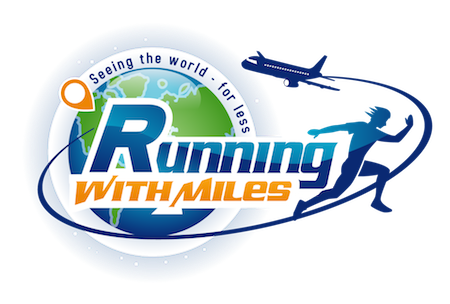The IRS continues to do a great job in getting the new stimulus payments out the door as they have now just sent out another 2 million stimulus checks, totaling $4.3 billion. Here is who gets them and what to look for.
Seventh Round of Stimulus Checks – What to Look For
This is the seventh batch of the American Rescue Plan payments. The official payment date is April 28 so you may already have the payment. If not, check further down the page to see how you can track your payments.
Here is Who This Round of Stimulus Payments is Going To
This round is headed to the following people:
- In total, this batch includes nearly 2 million payments with a value of more than $4.3 billion.
- More than 1.2 million payments, with a value of over $3 billion, went to eligible individuals for whom the IRS previously did not have information to issue an Economic Impact Payment but who recently filed a tax return.
- This batch also includes additional ongoing supplemental payments for people who earlier this year received payments based on their 2019 tax returns but are eligible for a new or larger payment based on their recently processed 2020 tax returns.
- This batch included more than 730,000 of these “plus-up” payments, with a value of over $1.3 billion.
- Overall, this seventh batch of payments contains about 1.1 million direct deposit payments (with a total value of $2.5 billion) and about 850,000 paper check payments (with a total value of more than $1.8 billion).
So, this is kind of another clean-up round, sending some “plus-up” payments (which are for people who had previous payments based on an earlier return but have since had their 2020 return processed) and payments to people who recently filed returns.
This latest batch is quite similar to the sixth batch as far as the number of checks and who they are going to. If you had recently filed a 2020 tax return (or it was just recently processed) and your income level changed from your 2019 return, this could mean that you are one of the people getting one of these $1,400 checks (or a portion of it).
Tracking Your Stimulus Payment
What to Look for in the Mail
So, this is what you need to look for if you are getting a prepaid debit card. Note that the IRS specifically said that the payments going in this mail – 1 million of them – are paper checks. But keep your eyes open in case it comes in the form of the prepaid debit card below.
The Visa debit cards are issued by MetaBank.


A sample image of the envelope that will be delivering your stimulus debit card
The check will be a normal check from the IRS.
Track Your Payment
Now that you know how the money is going out, the next step is finding out how your payment is/did go out. The trick for that is going to the IRS Get My Payment website. This will give you all the information about how your payment was made and when it went out.

To find out for sure, click this link to go to the IRS status tool. What you will need is your social security number, your birthdate, your address, and zip code. Right after entering that, it will give you a status message about your money. Below is what I saw with my status.

Status Messages
If you do not see it saying that the money will be deposited, you can check back each day as this tool is updated once per day. It will tell you if the money has been scheduled for deposit, a check sent out, or a debit card sent. If you do not recognize the bank account number shown, you will have to wait a little longer. The money will bounce back and you will eventually be issued a check or prepaid debit card.
Remember that the tool above will not let you make any changes to how you receive your payment. So, what the IRS has on file will be what they attempt to send it to.
Payment Status:
- A payment has been processed, a payment date is available and payment is to be sent either by direct deposit or mail. Note: mail means you may be issued an EIP Card or a check.
or
- You’re eligible, but a payment has not been processed and a payment date is not yet available.
It will not show the amount of your 2021 Economic Impact Payment.
Payment Status Not Available: We haven’t yet processed your payment or you’re not eligible for a payment.
Need More Information: Your payment was returned to the IRS because the Postal Service was unable to deliver it. Only people who get this message can use the tool to give us bank account information.
Get help with this tool in Get My Payment Frequently Asked Questions.
Track Your Payment in the Mail
If you see that your stimulus payment was sent out as a check or debit card, the next step is to set it up to track your money through the USPS. They have a handy tool that makes this easy.

Sign-up for the USPS Informed Delivery system
Link: Sign-Up for the Free Informed Delivery by USPS
While the Get My Payment tool can tell you when a check was mailed, it does not give you a delivery date. Also, there are some people that have had their checks stolen out of their mailboxes.
This great USPS tool is called Informed Delivery by USPS. This is a free service that you can setup that will send you an e-mail each weekday morning with the mail that you will be receiving. It delivers electronically a greyscale image of the front of each envelope that is set to be delivered to you.

Get a scan of all your mail to be delivered
This is accomplished through the automated scanning equipment the USPS uses for mail processing. Any mail that would go through this automated process will be sent as an image to your e-mail.
You can sign-up easily enough and verify your identity. But, it will take 3 business days for this process to be complete so if you do it today, you likely won’t have any notifications delivered before Wednesday or Thursday.
The below is a reminder from the IRS
Special reminder for those who don’t normally file a tax return
Although payments are automatic for most people, the IRS continues to urge people who don’t normally file a tax return and haven’t received Economic Impact Payments to file a 2020 tax return to get all the benefits they’re entitled to under the law, including tax credits such as the 2020 Recovery Rebate Credit, the Child Tax Credit, and the Earned Income Tax Credit. Filing a 2020 tax return will also assist the IRS in determining whether someone is eligible for an advance payment of the 2021 Child Tax Credit, which will begin to be disbursed this summer.
For example, some federal benefits recipients may need to file a 2020 tax return – even if they don’t usually file – to provide information the IRS needs to send payments for a qualifying dependent. Eligible individuals in this group should file a 2020 tax return as quickly as possible to be considered for an additional payment for their qualifying dependents.
People who don’t normally file a tax return and don’t receive federal benefits may qualify for these Economic Impact Payments. This includes those experiencing homelessness, the rural poor, and others. Individuals who didn’t get a first or second round Economic Impact Payment or got less than the full amounts may be eligible for the 2020 Recovery Rebate Credit, but they’ll need to file a 2020 tax return. See the special section on IRS.gov: Claiming the 2020 Recovery Rebate Credit if you aren’t required to file a tax return.
Bottom Line
The IRS is going at a very fast pace at getting the different rounds out of the American Rescue Plan payments. While the first stimulus payments last year took months, it has been a little more than one month since the first payments went out from the ARP and already the IRS has issued 163 million payments, totaling over $384 billion.
If you are in the group above, you should be able to receive your payment this week.






